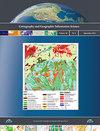不是简单的圆圈:定向You-Are-Here符号设计提高了室内布局地图的可用性
IF 2.4
3区 地球科学
Q1 GEOGRAPHY
Cartography and Geographic Information Science
Pub Date : 2023-03-04
DOI:10.1080/15230406.2023.2189166
引用次数: 0
摘要
室内布局图包含了建筑内部空间的信息。用户经常利用地图上的You-Are-Here (YAH)符号,首先确定自己当前的位置和方向,从而找到目标位置的方向。通常看到的圆形符号只表示用户的位置,这使得完成定位过程变得困难。基于对齐效应理论,我们通过添加当前方向信息来修改符号。我们使用眼动追踪技术进行了目标定向实验,以检验在桌面虚拟地铁站场景中,符号修改是否对用户的定向表现有积极影响。结果表明,修改符号组的参与者在较短的时间内获得了更高的定向任务准确性。我们还发现,修改后的符号显著降低了用户对环境信息的视觉依赖。在另一项实验中,为了进一步研究YAH符号在不同复杂程度的地图中的作用,我们的改进符号在不考虑地图复杂程度的情况下都取得了明显的改进。这些发现表明,修改后的符号确实提高了方向的便利性和室内布局地图的整体可用性。本文章由计算机程序翻译,如有差异,请以英文原文为准。
Not simply a circle: directional You-Are-Here symbol design improves the usability of indoor layout maps
ABSTRACT The indoor layout map contains information about the architectural interior space. Users often utilize the You-Are-Here (YAH) symbol on maps to firstly determine their current location and orientation to find the direction of a target location. Circle symbols often seen only indicate a user’s location, making it difficult to complete the orientation process. Based on alignment effect theory, we modified symbols by adding current orientation information. We conducted a target orientation experiment using eye-tracking technology to examine whether symbol modification positively affected users’ orientating performance in virtual subway station scenes on desktop. The results indicated that participants in the modified symbol group achieved a higher accuracy within a shorter time in orientation tasks. We also found that modified symbols significantly reduced users’ visual reliance on environmental information. Another experiment, in order to further investigate the role of YAH symbols in maps of different complexity, indicated that our modified symbol achieved obvious improvements regardless of map complexity. These findings revealed that the modified symbols indeed improved the convenience of orientation and the overall usability of indoor layout maps.
求助全文
通过发布文献求助,成功后即可免费获取论文全文。
去求助
来源期刊
CiteScore
5.20
自引率
20.00%
发文量
23
期刊介绍:
Cartography and Geographic Information Science (CaGIS) is the official publication of the Cartography and Geographic Information Society (CaGIS), a member organization of the American Congress on Surveying and Mapping (ACSM). The Cartography and Geographic Information Society supports research, education, and practices that improve the understanding, creation, analysis, and use of maps and geographic information. The society serves as a forum for the exchange of original concepts, techniques, approaches, and experiences by those who design, implement, and use geospatial technologies through the publication of authoritative articles and international papers.

 求助内容:
求助内容: 应助结果提醒方式:
应助结果提醒方式:


